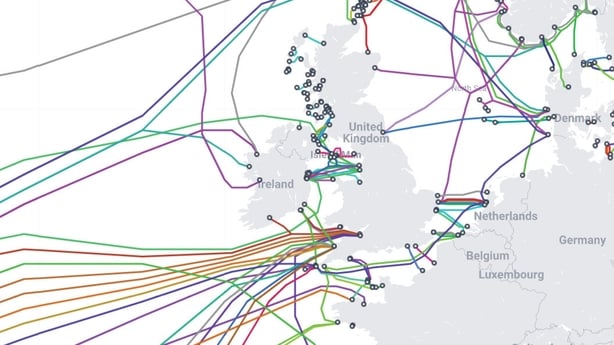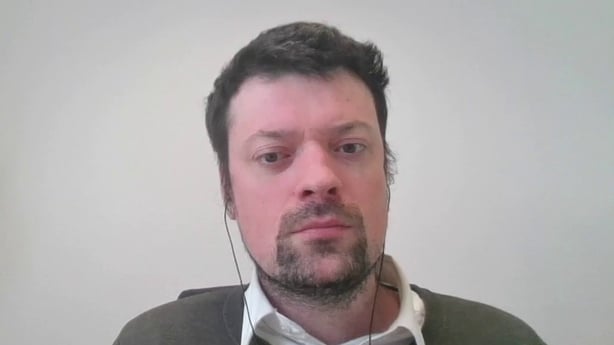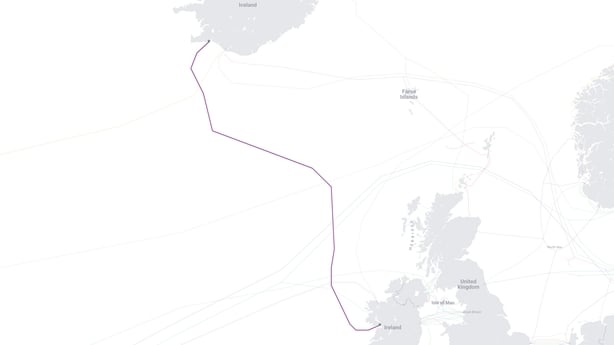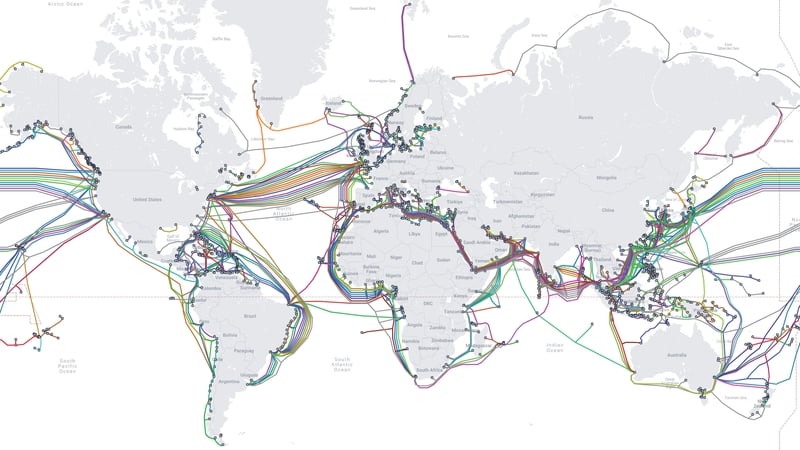Around 97 percent of the world's communications and internet traffic travels through a network of undersea fiber-optic cables. Almost ten trillion euro worth of financial transactions moves through it every day.
It is made up of over 550 individual cables, stretching to 1.4 million kilometers in total length. Three-quarters of all cables in the northern hemisphere pass through or near Irish waters, most of them off the southwest coast.
With global tension rising and disagreement growing between major geopolitical power players in the United States, China and Russia, Ireland’s oversight and security over these cables is coming in for increasing attention.
But who is responsible for protecting this crucial continental infrastructure and how vital is for Ireland, and wider Europe?
"We cannot ignore the particular vulnerabilities posed to energy and communications infrastructure, across Europe, and most especially in the waters of the North Atlantic, close to our shores," Tánaiste Micheál Martin said as recently as May.
Disruption to the network could have, "devastating consequences not only for Ireland but also for our partners."
Calls from security and defence experts - and from some politicians, including Mr Martin - to enhance our ability to protect this critical infrastructure have been growing in recent years, and have accelerated since the attack on the Nord Stream pipeline last year.
"Ireland is a significant financial centre now across the world," Eoin McNamara, a Research Fellow at the Finnish Institute of International Affairs in Helsinki, told Katie Hannon on Upfront: The Podcast.
Listen to Eoin McNamara speaking to Katie Hannon on Upfront: The Podcast
We need your consent to load this rte-player contentWe use rte-player to manage extra content that can set cookies on your device and collect data about your activity. Please review their details and accept them to load the content.Manage Preferences
"If we look at the European Union and we look at the United States, that interconnection, which Ireland finds itself pretty much at the centre of, is a very significant in these global transactions."
Mr McNamara says Ireland's position as a hub of global tech owes much to this subsea interconnectivity.
"We've all these technology multinationals in Ireland, all this foreign direct investment. They rely on this infrastructure. And of course, infrastructure needs to be protected."
"In different tacit ways, Ireland does have primary responsibility for a lot of that undersea infrastructure which is after all economic infrastructure."
"There needs to be patrols on all sorts of maritime activity, fisheries and undersea infrastructure," he said.

However, who conducts such patrols or provides such security is a contentious question.
The Irish Naval Service struggles currently to staff the small number vessels is has available to it for maritime patrols.
As a result, some experts say Ireland should enter into an agreement with other nations to cover security for the cables.
NATO's Critical Undersea Infrastructure Protection Cell was set up in February to map vulnerabilities, and coordinate efforts between NATO allies, partners, and the private sector.
Ireland has yet to join the group though there has reportedly been interest.
That has sparked concern from, among others, Independent Dublin MEP Clare Daly, who believes it would go against Ireland’s policy of neutrality.
On Monday, she told Upfront with Katie Hannon that calls for the State to join a NATO alliance focused on subsea infrastructure were a "red herring," and that an underfunded Naval service should be a bigger concern.
We need your consent to load this comcast-player contentWe use comcast-player to manage extra content that can set cookies on your device and collect data about your activity. Please review their details and accept them to load the content.Manage Preferences
Analysts like Mr McNamara say there is an urgent need to address the security over the cables, and that expanding our naval service to the necessary scale is not realistic.
"NATO are proposing to facilitate engagement with industry and bring key military and civilian stakeholders together to leverage innovative technologies. It is, essentially, information sharing," Mr McNamara said.
He fears that infrastructure in Ireland's EEZ (exclusive economic zone) could be targeted by sabotage, which would have a continental impact.
EEZs are areas in which individual countries have internationally-recognised rights to conduct certain activities in the sea area, but do not give any power of access to those areas.
Ireland's EEZ extends 320km off the coast.
"In and around Ireland's EEZ we had Russian registered commercial vessels loitering around there. It only takes a couple of rusty ships with ship repair equipment to actually cut these cables. They're very, very weak and vulnerable and feeble in many ways," Mr McNamara said.

Damage to subsea cables can result in widespread communication outages, affecting not only internet access but also emergency services, financial transactions, and international connectivity.
In April, the Defence Forces said the Irish Air Corps and the Irish Naval Service "had observed Russian commercial vessels in international waters off the island of Ireland."
Despite discussion and concern at the time, no damage to the cables was reported or discovered in the period since.
What are subsea cables?
Subsea cables, or submarine cables, are long wires laid on the ocean floor to transmit data over long distances. The key component of these cables is a fiber-optic cable that is encased by protective layers of stronger materials like Kevlar.
The most recent one to open in Irish waters was IRIS, it connects Iceland to the rest of northern Europe through Ireland, running from Galway Bay to Thorlakshofn, a distance of 1,700 kilometres.

IRIS is owned and operated by Farice, a telecommunications company owned by the Icelandic state.
Subsea cables are usually owned by a consortium of owners, often entities like Farice which owns IRIS.
Google has invested in 16 cables; Facebook has stakes in 12 while Micrsoft and Amazon have interests in five cables each.
These entities are responsible for costs like maintenance. But there is an expectation that Ireland should bear at least some responsibility for protecting the cables that lie within the State's exclusive economic zone (EEZ), Mr McNamara says.
Listen to Eoin McNamara speaking to Katie Hannon on Upfront: The Podcast here, on Apple Podcasts and on Spotify.
Watch Upfront with Katie Hannon on Ireland's neutrality policy on the RTÉ Player.






